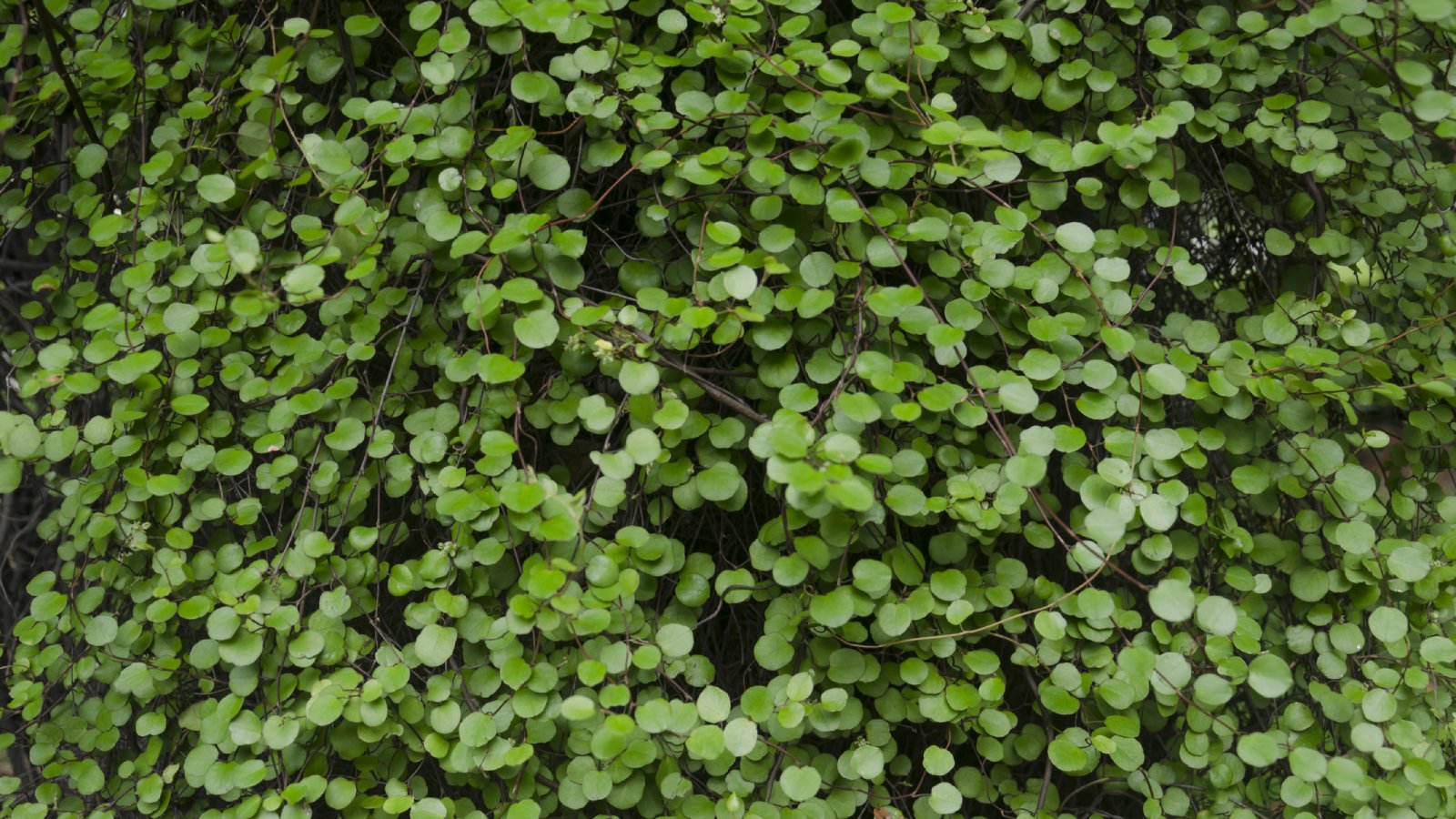Container Grown Angel Vine Plants – Caring For An Angel Vine In A Pot

Growing a potted angel vine, Muehlenbeckia complexa, is easy if you can provide partial to full sun. This New Zealand native only grows about 6 inches (15 cm.) tall but quickly spreads to a much wider 18 to 24 inches (46-61 cm.).
Also known as wire grass, it has any airy appearance due to its wiry stems and small, shiny leaves. While it is a groundcover in nature, container grown angel vine plants will cascade and spill over a pot’s edges beautifully. It can also be easily grown on a trellis or topiary.
Growing Angel Vine in a Pot
Angel vine is typically grown as an annual outdoors but is adaptable in a container as a houseplant or outdoors too. In frost-free climates, angel vine in a container can be grown year-round.
Plants are hardy to zone 7, 0 to 10 degrees F. (-18 to -12 C.). If you are in a climate where you can grow this plant year-round, but that still reaches the freezing point, keep in mind that thinner terra cotta or concrete pots may crack outdoors in the freeze/thaw cycles.
It is safer to use thicker pots, and also bigger pots that contain more soil, to survive the freezing temperatures more easily without damage. The greater amount of soil will also insulate the plants more and help ensure that the plant will survive if you are intending to keep the plant outdoors but are in a marginally hardy zone for this plant.
Give your angel vine plenty of sun for best results. As far as watering goes, these plants like a moist soil, but it must be well drained. A good all-purpose potting soil mix works beautifully for angel vine. Depending on the size of the pot, allow the top 2 to 4 inches (5-10 cm.) to dry out before watering thoroughly again.
For best results, be sure to fertilize during the growing season. Many different types of fertilizers can be used, but the simplest and easiest method is to use a good time-release fertilizer. It can be mixed into the soil and provides a steady supply of nutrients throughout the season.
Sign up for the Gardening Know How newsletter today and receive a free copy of our e-book "How to Grow Delicious Tomatoes".
This plant will have a naturally unruly look because of the wiry stems, but if you want a tidier appearance, or a smaller plant, you can prune it back at any time in the growing season. This will cause the plant to have a denser growing habit.